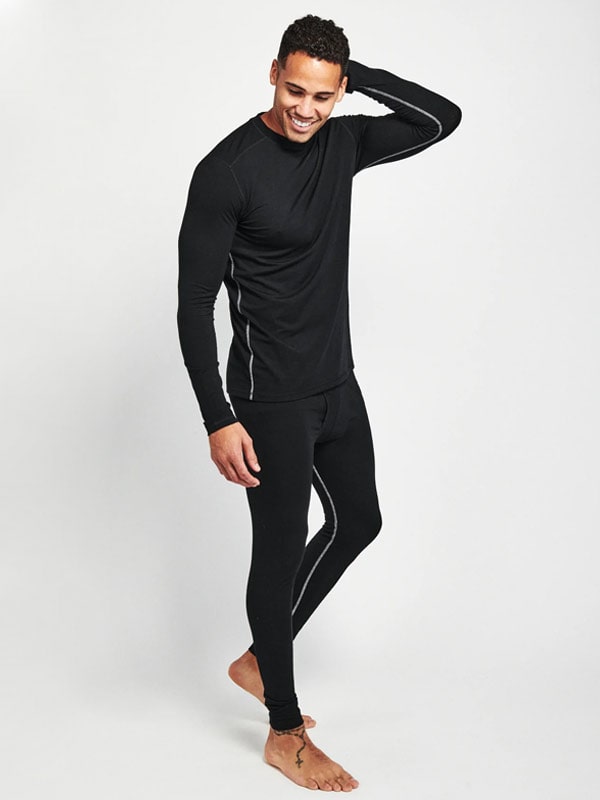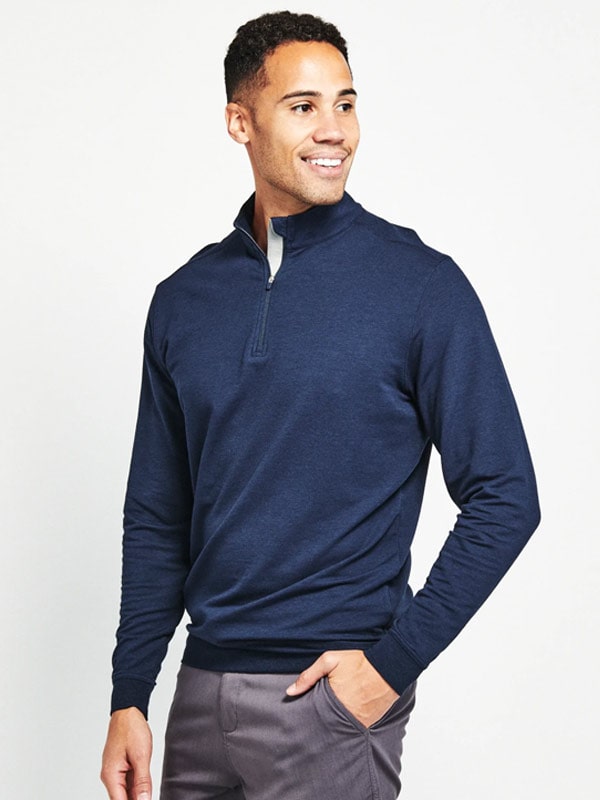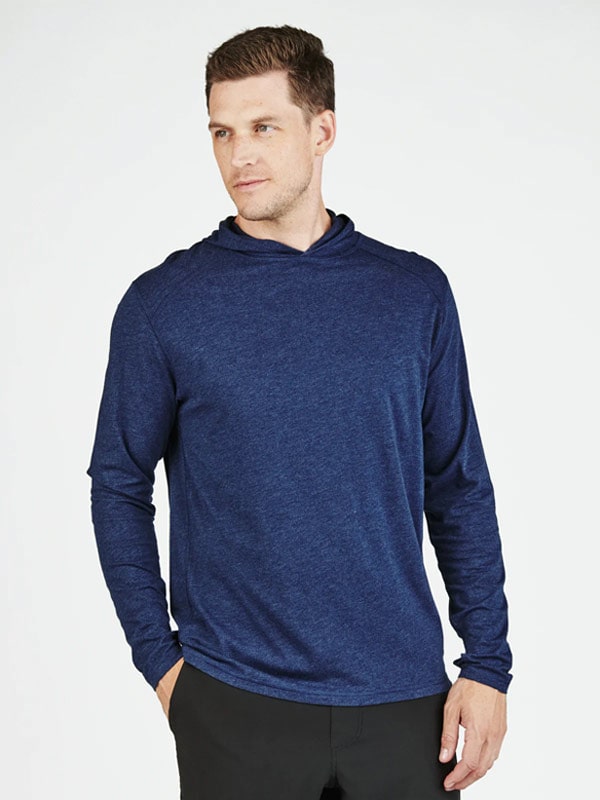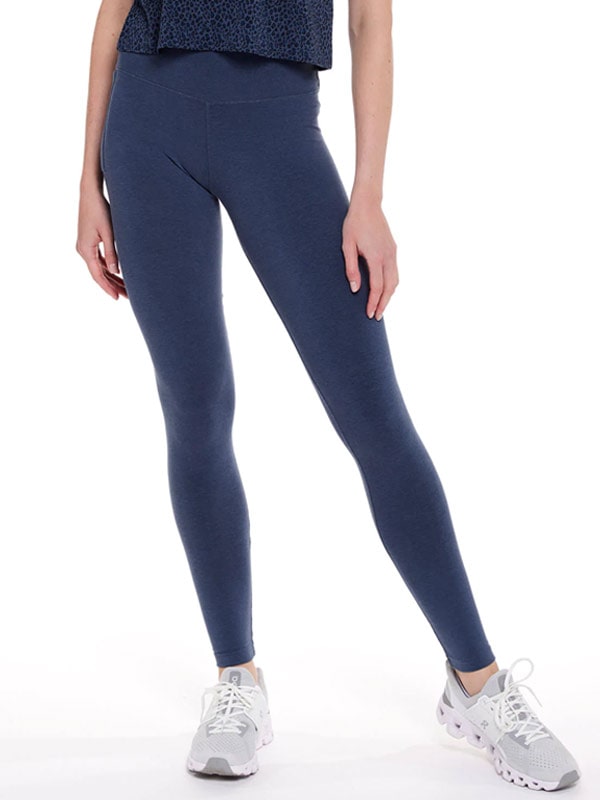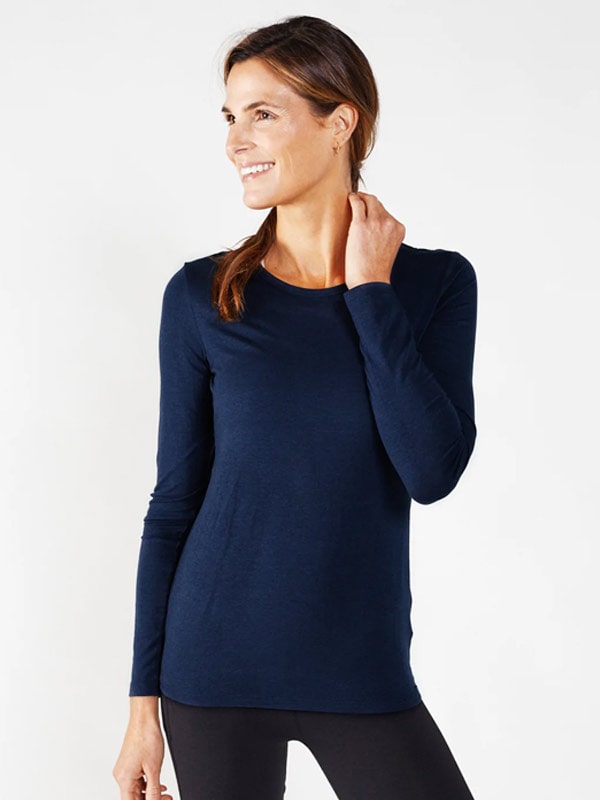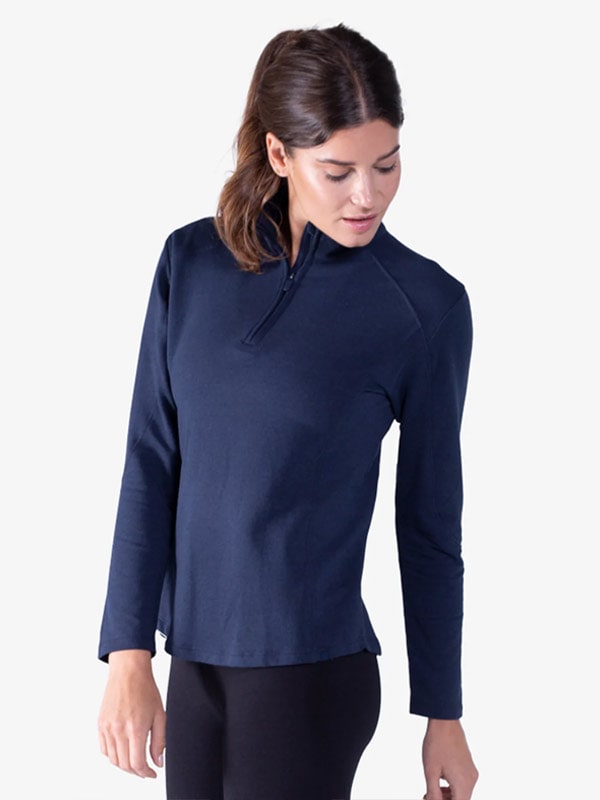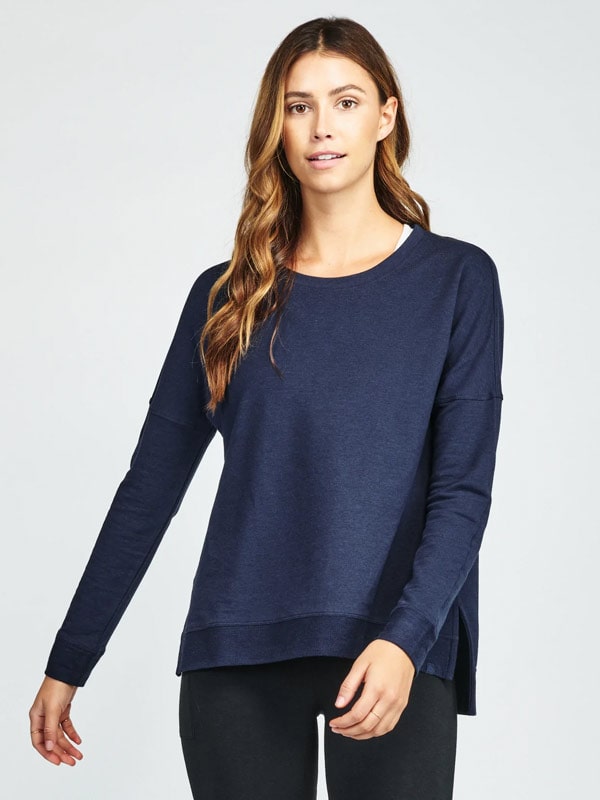Unlock Peak Performance with Advanced Moisture Wicking Athletic Wear
The feeling of sweat dripping down your back during a workout isn't just uncomfortable – it can hinder performance and motivation. Thankfully, technology has gifted us moisture-wicking fabrics, a game-changer for athletes and anyone seeking a drier, more comfortable experience. This guide delves into the science behind these fabrics, explores their benefits, and equips you to choose the perfect gear for your needs.
 |
 |
| All Day T-Shirt | NOLA Tank 2.0 |
Forget stiff gym tees! The All Day T-Shirt is your new best friend, blurring the lines between workout gear and everyday comfort. This ultra-soft bamboo fabric wicks away moisture, keeping you cool and dry all day long. Pair it with leggings for a casual look or crush your next workout - it's that versatile. Machine washable, this tee is your new go-to for effortless style and comfort.
The Nola Tank you love just got even better! We kept the buttery-soft fabric and moisture-wicking performance, but gave it a flattering A-line fit and a touch more length. This relaxed tank transitions seamlessly from studio to street, making it your new go-to for comfort, style, and sustainability.
Understanding Moisture Wicking Fabric
- Definition and Composition:
Moisture-wicking fabrics are specially designed textiles that pull sweat away from your skin and transport it to the outer layer of the garment. This outer layer then allows the sweat to evaporate quickly, keeping you feeling dry and comfortable during physical activity. These fabrics typically use a blend of synthetic fibers like polyester or nylon. The magic lies in the unique properties of these fibers:
- Hydrophilic Inner Layer: This inner layer attracts and absorbs sweat, spreading it across a larger surface area.
- Hydrophobic Outer Layer: This outer layer repels moisture, allowing the sweat to evaporate into the air and preventing the fabric from becoming saturated.
- How Moisture-Wicking Works:
Imagine sweat as tiny water droplets on your skin. When you wear moisture-wicking fabric, the hydrophilic inner layer acts like a sponge, drawing these droplets away from your skin. The larger surface area created by the fabric allows for faster evaporation, facilitated by the air circulation through the garment. This process keeps your skin feeling dry and prevents that uncomfortable feeling of clinging, sweaty clothes.
Benefits of Moisture-Wicking Fabric
Moisture-wicking fabrics offer a multitude of benefits that go beyond just staying dry:
- Keeping Dry and Comfortable: This is the most obvious advantage. By wicking away sweat, you'll feel cooler and more comfortable during exercise, allowing you to focus on your workout instead of battling dampness.
- Performance Enhancement in Sports and Outdoor Activities: When you're dry and comfortable, you can perform at your best. Moisture-wicking fabrics help regulate body temperature, preventing overheating and allowing for better focus and range of motion. This translates to improved performance in sports, running, hiking, or any activity that gets your heart pumping.
- Everyday Applications: Moisture-wicking fabrics aren't just for athletes. They're perfect for everyday wear, especially in hot or humid climates. Whether you're running errands, traveling, or simply enjoying a walk on a sunny day, moisture-wicking clothing can keep you feeling fresh and comfortable.
- Longevity and Durability: Moisture-wicking fabrics tend to be more durable than traditional cotton. They often dry faster, which minimizes the growth of odor-causing bacteria and extends the life of the garment.
Types of Moisture-Wicking Fabrics
The world of moisture-wicking fabrics offers a variety of options to suit your needs and preferences:
- Polyester vs. Cotton: Which is Better?
The battle between polyester and cotton is a classic. While cotton is a natural and breathable fabric, it absorbs sweat and clings to the body, leaving you feeling damp and uncomfortable. Polyester, on the other hand, excels at wicking away moisture and dries quickly, making it the clear winner for activewear.
- Natural vs. Synthetic Options:
While synthetic fibers like polyester and nylon dominate the moisture-wicking market, there are some natural alternatives. Merino wool, for instance, has excellent moisture-wicking properties and even offers some warmth and odor resistance. However, wool tends to be more expensive and requires specific care compared to synthetics.
- Innovative Moisture-Wicking Technologies:
Fabric technology is constantly evolving, leading to innovative features in moisture-wicking garments. Here are a few examples:
- Mesh Panels: Strategically placed mesh panels enhance breathability and promote faster evaporation of sweat.
- Antimicrobial Finishes: These finishes help reduce odor-causing bacteria growth, keeping your clothes fresher for longer.
- Seamless Construction: Seamless garments minimize chafing and provide a more comfortable fit.
 |
 |
| Recess Fitness T-Shirt | Carrollton Fitness T-Shirt |
Ditch the synthetic sweat traps! Carrollton's bamboo-cotton blend offers natural comfort and performance. This tee boasts moisture-wicking, odor-resistance, and UPF sun protection, all in a relaxed, four-way stretch fit. No shoulder seams for total freedom of movement – conquer any workout, naturally.
The Recess T-Shirt is your new everyday essential. Ultra-soft bamboo fabric wicks away moisture, keeping you cool and dry all day. This versatile tee goes from high-intensity workouts to casual looks with ease. Machine washable, it's your new go-to for effortless comfort and style.
Choosing the Right Moisture-Wicking Fabric for You
With so many options available, selecting the perfect moisture-wicking fabric can feel overwhelming. Here are some factors to consider:
- Activity Level: High-intensity workouts require fabrics that wick away sweat quickly. Opt for polyester or nylon blends with good breathability.
- Climate: Consider the weather conditions. For hot climates, choose lightweight, breathable fabrics. In cooler temperatures, look for fabrics that offer some moisture-wicking ability while providing some warmth.
- Personal Preference: Do you prefer natural or synthetic fabrics? Some people find synthetic fabrics feel less comfortable against the skin. Look for blends or natural options like merino wool if this is a concern.
Sweat is a badge of honor – a testament to your hard work during a workout. But let's be honest, feeling drenched and uncomfortable can hinder your performance and motivation. Here's where moisture-wicking athletic wear comes in, a game-changer for athletes of all levels. This guide dives deep into this technology, helping you choose the perfect gear to stay dry, comfortable, and focused on achieving your fitness goals.
Common Questions About Moisture-Wicking Fabric
Let's address some frequently asked questions about moisture-wicking fabrics:
- 1. What Fabrics are Moisture-Wicking?
Synthetic fibers like polyester, nylon, and polypropylene are the champions of moisture-wicking. They boast a unique construction: a hydrophilic (water-loving) inner layer that absorbs sweat and a hydrophobic (water-repelling) outer layer that allows for quick evaporation.
- 2. Is Moisture-Wicking the Same as Dri-FIT?
Dri-FIT is a brand name for a specific moisture-wicking technology developed by Nike. However, the concept is similar to what many other athletic brands offer under different names.
- 3. Can Cotton Be Moisture-Wicking?
Not truly. Cotton absorbs sweat but doesn't wick it away from your skin, leading to a heavy, damp feeling. This can cause chafing and discomfort, especially during intense workouts.
- 4. Care and Maintenance Tips
To ensure your moisture-wicking gear performs its best, follow these tips:
- Read the label: Washing instructions can vary. Opt for gentle detergent and avoid fabric softeners, which can clog the fibers and hinder performance.
- Turn clothes inside out:This helps protect the fabric surface during washing.
- Wash in cool or warm water: Hot water can damage some fabrics.
- Air dry whenever possible: Heat from dryers can also degrade the fabric's wicking properties.
Choosing the Right Moisture-Wicking Fabric for Your Needs
Now that you understand the basics, let's explore how to choose the best moisture-wicking apparel for your specific needs:
- Factors to Consider:
- Activity Level: High-intensity workouts like running or HIIT generate a lot of sweat. Prioritize fabrics like polyester or nylon that dry quickly. For lower-intensity workouts or cooler climates, consider fabrics with some moisture-wicking ability but also offer some warmth, like merino wool blends.
- Climate: For hot and humid environments, opt for lightweight, breathable fabrics with mesh panels for extra ventilation. Colder weather calls for fabrics that wick away sweat but also provide some warmth.
- Fit: A good fit is crucial for both comfort and performance. Clothes shouldn't be too baggy or too tight. Baggy clothes can flap around and cause irritation, while tight clothes can restrict movement.
2. Buying Guide and Recommendations:
Here are some recommendations to get you started:
- For runners: Look for lightweight, quick-drying fabrics like polyester or nylon blends. Consider shorts or tights with a built-in liner for added comfort.
- For weightlifters: Choose breathable fabrics that allow for a full range of motion. Opt for fitted shirts and shorts or leggings that provide some muscle support.
- For yoga or Pilates: Look for fabrics that are both moisture-wicking and comfortable for stretching and holding poses. Consider high-waisted leggings or capris for added support.
- For everyday workouts: A versatile moisture-wicking t-shirt or tank top paired with shorts or leggings is a great option for various activities.
Conclusion and Additional Resources
- Recap of Key Points:
Moisture-wicking fabrics are a valuable tool for athletes of all levels. They help you stay dry and comfortable during workouts, leading to improved performance and a more enjoyable fitness experience.
- Further Reading and Related Topics:
- The benefits of wearing moisture-wicking clothing go beyond comfort during exercise. It can also help prevent skin irritation and post-workout
---------------
At tasc Performance, we believe in pushing the boundaries of athletic apparel, but not at the expense of our planet. That's why 75% of our products are crafted from natural fiber-dominant blends, primarily organic cotton. We're committed to "Always Doing Better" – a philosophy woven into every stitch.
Our goal is ambitious: by 2025, we aim to have at least 85% of our products made with sustainable materials, including plant-based and recycled options. The road to sustainability isn't always smooth, but it's necessary. We invest heavily in innovative fabrics and production methods, confident that we'll reach our ambitious target.
Sustainability is in our DNA. Respect for the environment has been a core principle since day one. Apparel production is a complex dance, and our co-founders are deeply involved. With over 40 visits to our factories, they champion continuous improvement and responsible initiatives.
Choose tasc Performance and choose performance apparel that goes beyond the gym. Choose a brand that's dedicated to a healthier planet, one innovative garment at a time.


